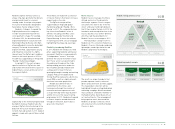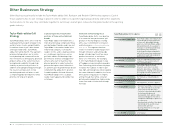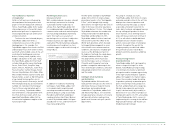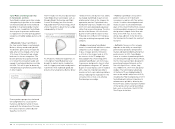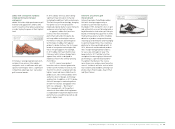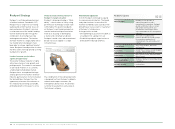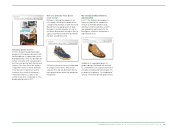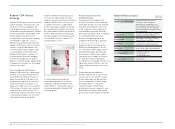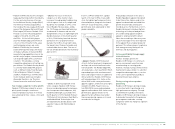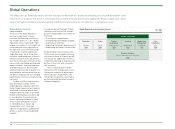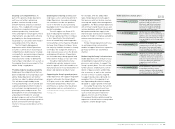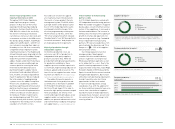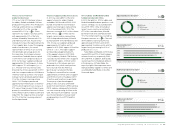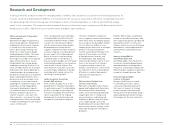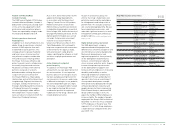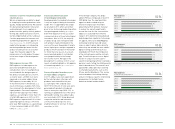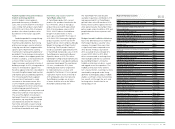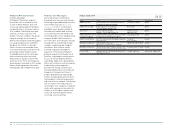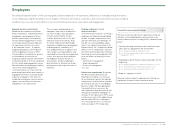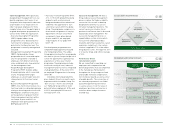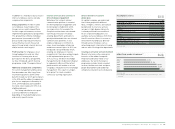Reebok 2010 Annual Report Download - page 111
Download and view the complete annual report
Please find page 111 of the 2010 Reebok annual report below. You can navigate through the pages in the report by either clicking on the pages listed below, or by using the keyword search tool below to find specific information within the annual report.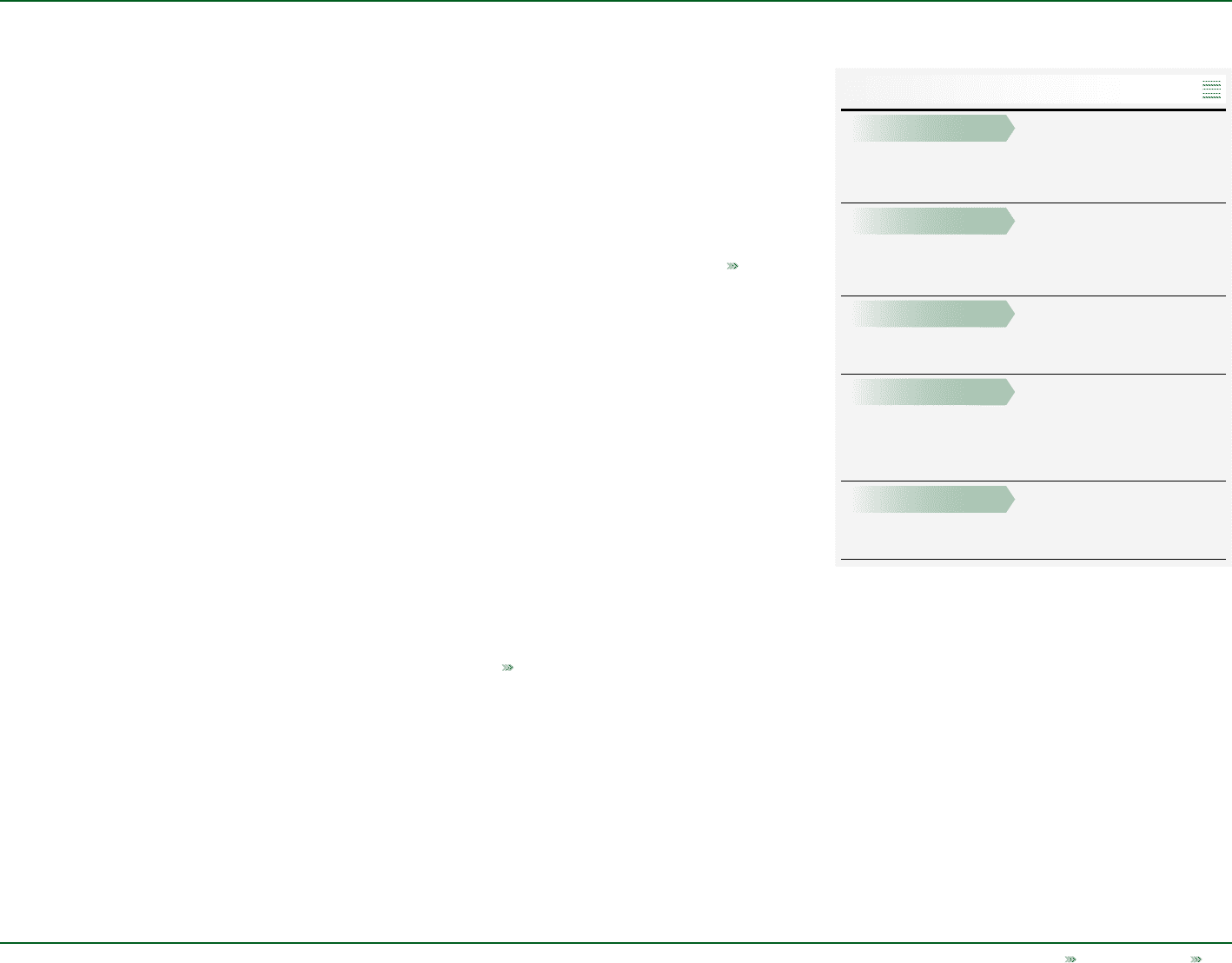
Group Management Report – Our Group Global Operations 107
Ensuring cost competitiveness: As
part of this priority, Global Operations
will focus on further optimising
product creation through a more
efficient material and colour selection
process. This, coupled with increased
automation in manufacturing, will
enhance productivity, shorten lead
times and improve overall quality. These
improvements are expected to enhance
profitability for the Group and ensure
we provide our consumers with the best
value proposition in the industry.
The Profitability Management
department within Global Operations
assumes a central role in realising cost
competitiveness by driving our strategic
costing efforts and optimising our buying
strategies. This includes monitoring
macroeconomic trends, to identify the
future impact on product costs as well as
the ongoing financial assessment of the
adidas Group’s supply base.
Providing industry-leading availability:
Building on the solid platform that has
been established to ensure product avail-
ability, Global Operations will further
shorten our order-to-delivery lead times.
This will be accomplished by estab-
lishing and offering a set of tailored and
sophisticated replenishment models to
our customers via improvements in our
planning systems and processes. The
development of risk-oriented planning
and production models for selected
product ranges as well as the shift from
buying to inventory planning at our distri-
bution centres both form key require-
ments for the successful delivery of this
initiative.
Enabling later ordering: Enabling later
ordering is a cross-functional priority in
Global Operations focused on allowing
our customers to order our products
closer to the time of sale, facilitating
buying decisions that are based on better
market knowledge.
This will support our Route 2015
goal of reducing the lead times across
the Group’s product portfolio to 60 days
or less. Specifically, the initiative will
focus on immediately reducing produc-
tion lead times on the majority of Reebok
footwear from 90 days to 60 days. Since
the majority of adidas footwear is already
on 60 days, the change will allow us to
align sales processes across the brands
and improve efficiencies. Preparations
are also underway to bring apparel lead
times down to 60 days or less over time.
The above improvements involve
establishing a greater regional source
base for apparel, which will enable us to
manufacture closer to our key markets to
deliver and replenish products faster.
Supporting the Group’s growth projects:
Global Operations will support the growth
projects outlined in the Group’s Route
2015 plan, such as the adidas NEO label,
key market programmes, Retail and
eCommerce as well as other key brand
programmes such as customisation
see Global Brands Strategy, p. 87 and Global Sales
Strategy, p. 82.
For example, with the adidas NEO
label, Global Operations will support
this business with fast fashion creation,
sourcing and supply chain management
capabilities. For Retail, Global Operations
will continue to build the processes and
systems backbone with the ultimate goal
being a demand-driven supply chain
that leverages existing short lead time
production models to improve availability
without excessive inventory see Retail
Strategy, p. 84.
Finally, Global Operations will focus
on evolving existing customisation
models in support of business expansion,
particularly within our eCommerce
channel.
Modernising the Group’s infrastructure:
Global Operations will continue to focus
on building the required infrastructure,
processes and systems to support the
Group’s growth plans. This will include
further process simplification, consol-
idation of legacy systems and distribu-
tion structures, as well as the creation
of state-of-the-art systems required
to support new business demands. An
example of this is the opening of our
new Spartanburg distribution campus
designed to support growth in the USA.
Also under this priority, the function
will continue delivering its existing
long-term improvement programmes
such as Fast and Lean Creation for
apparel, the roll-out of the Global
Procurement Solution platform and the
expansion of virtualisation to new product
categories and the design teams.
Global Operations strategic pillars
Replenishment Provide high product availability
and timely and fast deliveries to
Wholesale and Retail customers
while minimising finished goods
inventory, to support the Group’s
controlled space initiatives.
End-to-End Profitability Identify key cost and profitability
drivers and their interrelationships to
optimise decision-making to mitigate
financial risks and ensure the long-
term profitability of the Group and its
supply base.
Adaptive Supply Network Enhance the flexibility and
responsiveness of both the Global
Operations Sourcing and Supply
Chain Management organisations to
satisfy fast-changing market needs.
End-to-End Planning Optimise the Group’s demand and
supply planning system landscape
to improve efficiency, transparency
and cross-functionality of processes
across the Wholesale and Retail
segments as well as Other
Businesses.
Accelerated Creation to Shelf Build capabilities, processes and
technologies that drive faster,
smarter and more efficient product
creation to enhance the Group’s top-
line and bottom-line growth.
02


